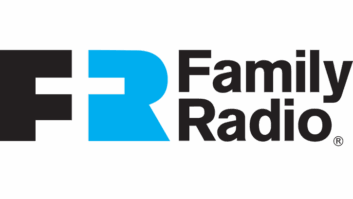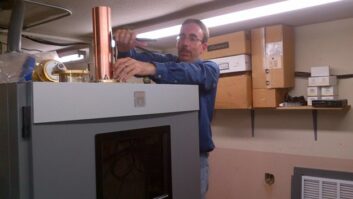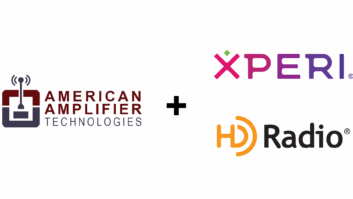It seemed like it would take forever, but consumers finally got their first taste of a real tabletop HD Radio just in time for Christmas. Like so many of my radio-engineering brethren, I just had to spring for my own Boston Acoustics HD Recepter at the lofty retail price of $500. (The retail price was lowered to $299 subsequent to my review.)
I got a $20 rebate from the Crutchfield online deal, but never in my wildest dreams did I actually think I would ever pay that kind of money for a small, bedside radio. I easily rationalized the purchase by reminding myself the radio industry only invents and adopts a totally new transmission mode about once every 50 years. I really wanted to be at the starting gate of radio’s third new era.
BA has stepped up to establish a milestone of sorts by delivering the first full-featured tabletop HD radio to market. No doubt those that follow from other manufacturers will be measured by the performance of the Recepter.
A MILESTONE FOR HD RADIO
Most important, perhaps, this radio features multicasting capability. Its introduction coincides with the recent unveiling of HD-2 format assignments by the HD Radio Alliance. Most of the early HD-2 services will initially be commercial-free, just like satellite. The national press is finally taking note by touting multicasting HD technology as terrestrial radio’s counter-punch to satellite competition.
Getting easy-to-use multicast HD radios – which offer the consumer something more than just “digital sound” – onto store shelves is a crucial turning point in the HD rollout. Many articles showcase the Recepter as the first radio the public will see as a viable alternative to satellite for more variety and more choices.
I’ve spent considerable time playing with several Kenwood and Panasonic aftermarket HD car radios purchased soon after a few of our stations installed HD transmitters. But after-market car radios are only a tiny fraction of radio sales. Without HD OEM car radios, portables or tabletops, there has been little for the average buyer who might be interested in HD. The Recepter puts an end to that frustration.
I certainly didn’t want to inflict a first-generation aftermarket HD radio on my almost new SUV complete with an integrated navigation display, so I decided to wait for the Recepter and put it through the paces during Christmas vacation.
BIG SOUND IN A SMALL PACKAGE
First impressions are lasting ones. BA radios deliver impressive bass and sport a digitally equalized amplifier with BassTrac circuitry. In fact, the Recepter may be a bit bass-heavy, especially on AM stations. Fortunately BA includes a bass trim control in the setup menu to allow for contouring the bass response for room conditions and personal taste.
Stereo performance is an added feature in the HD version of the Recepter via a separate second speaker, including an extension cord for wide separation installations. The overall frequency response is excellent with plenty of crisp highs to balance the big bass. Stations jump right out of the Recepter and fill up an average-sized room.
The bright blue LED tuning and text display features an HD indicator that blinks when HD content is first recognized. It blinks for about five seconds until HD lock is acquired and then stays constant when HD decoding replaces the analog program.
It’s easy to spot HD stations that are not precisely time-aligned with their analog. I found a few that must still be tweaking their installations and had no analog delay, which of course presents the listener with an eight-second out-of-synch train wreck every time blending occurs. A few others appeared to be slightly out-of-synch, which causes a brief overlapping echo during blending transitions.
ANTENNA CONSIDERATIONS
BA includes a simple detachable wire on an F connector for the inside FM antenna as well as an external AM loop that includes a built-in plastic stand to position it for best reception. For fringe area and shadowed locations, an external antenna of some kind may be needed, especially for reliable HD and FM supplemental channel performance.
When signal levels are adequate and stable, HD and supplemental channel reception is solid as a rock. Even if the analog signal is contaminated by multi-path or noise, HD will lock and perform well as long as there is sufficient signal strength. This is the most common reception condition where HD shines. Hearing noisy analog blend to crystal clear HD does elicit a “wow” experience. It is awesome to hear the difference on AM.
On the other hand, when the analog signal seems relatively clean but attenuated because of shadowing or distance, receiving HD can be a bit challenging when using the short wire antenna. I found myself trying all kinds of various orientations for the wire to find a “sweet spot” where HD would lock on weaker stations, but discovered HD would not remain reliably stable. The Recepter could use enhanced front-end sensitivity to better cope with these conditions.
The obvious solution in such compromised signal environments is to employ an outside antenna. That has always been an option for those who want to go the extra mile to improve reception for a favorite station of any kind. But I fear that the majority of consumers who buy this kind of radio will not work that hard to make marginal HD signals work well, especially if there are enough other choices on the dial that do perform adequately.
Without blend to analog, supplemental channel HD programs simply mute when the HD lock is lost. This is a serious disadvantage when using HD in marginal receiving locations, but just like many satellite radio listeners who want to use their portable sets inside, buying and installing a suitable external antenna nails the problem.
HD TUNING MADE EASY
Tuning in supplemental channel HD programs is a snap and works the same as most HD car radios. Once the analog channel is set and the main HD-1 program locks, the user can merely jog the tuning dial one click up frequency to find an HD-2 program. If an HD-3 program is present, one more click will tune that in.
When a supplemental channel is established and locked, and the user then tunes in other stations, that same supplemental channel reappears first when the user returns to the main carrier frequency, instead of its main HD-1 program channel. If the user wants another supplemental channel or the main channel of that station, he merely clicks down frequency to tune it in.
There is no delay in capturing supplemental channel audio as long as HD-1 remains locked. This is an improvement over most of the HD car radios that revert to a muted “linking” period every time the channel knob is changed. If any of these channels contains program-associated data, like song title and artist, it will be conveyed on the text display.
CHALLENGING CHANNEL LABELS
While the industry is still trying to decide how supplemental channel programs should be labeled or identified on HD radio displays, receiver manufacturers with product in the market already seem to have settled on FM-1, FM-2, FM-3; or HD-1, HD-2, HD-3, etc.
Either format seems reasonable as a starting point, but this will undoubtedly cause some confusion for many HD users who encounter supplemental channel programs that have nothing to do with the main HD-1 station. Quite a few HD stations owned by multi-station clusters are simulcasting a sister AM station with completely different call letters and format on one of their HD-2 channels.
What needs to be incorporated in the standard bit-stream HD format is the ability for stations to be able to label their supplemental channels as they see fit. Perhaps an eight-character alphanumeric identifier, similar to the RDS ID format that can be user-programmed and modified as necessary into their HD exciter for any supplemental channel, would be feasible.
One nice feature of the Recepter, not offered in other HD radios I’ve test-driven, is the ability to display RDS data. Unfortunately it only works on non-HD stations. If you transmit HD with or without PAD, as well as RDS, you won’t get to see the RDS data.
REDUCING INTERFERENCE
Selectivity and adjacent-channel suppression performance of the HD Recepter is impressive, perhaps the best in any consumer radio I’ve used. While those specs are not published in the owners manual or available online, the design folks at BA obviously understand the challenges HD creates in the way of sideband interference energy. The company has done a nice job of minimizing its effects.
I was able to listen to a fringe area second-adjacent FM analog station next to a local FM HD signal with no problems. I could listen to a short-spaced first-adjacent analog signal next to an FM HD signal by optimizing the antenna orientation with no more interference than one might expect, even with the presence of HD sideband energy.
Selectivity performance on AM also is impressive. When tuning to a first-adjacent channel, sideband splatter seems to be gated or squelched off so that it is not nearly as annoying. Even while listening to an AM HD station on its first-adjacent channel, the level of digital hash is significantly attenuated. This suggests that new design tricks can be used in the new generation HD receivers to minimize digital noise interference to neighboring channels.
Unfortunately as of this writing we were not able to find a good example of receiving a station that was adjacent to an AM HD station during critical hours to better evaluate HD noise interference performance. Many engineers and observers fear this problem could wipe out large areas of nighttime coverage for such stations, even inside their protected contours.
IN PURSUIT OF AUDIO EXCELLENCE
For stations that have intelligently applied appropriate processing and bit-rate choices, the transition from analog to HD reveals strikingly cleaner and detailed high frequency response. Not having to cope with high-frequency pre-emphasis limiting restores the ability to hear unmolested high-frequency performance on an FM radio station for the first time.
The realism of more faithfully reproduced source material, including dynamic punch and clarity, is breathtaking on HD for anyone who appreciates good audio. Obviously HD stations that have no supplemental channels and use the full 96 kbps rate for HD-1 perform the best in this regard. But at 64 or 48 kbps, the minor degradation of nuance coding artifacts is generally less annoying than that caused by over-processed analog with a heavily limited or clipped high end.
Even on stations transmitting both HD-2 and HD-3 channels that typically use bit-rates at 32 kbps and lower, the audio quality is remarkably decent if the source quality is maintained. The few HD-3 channels we could evaluate all belonged to NPR stations that are placing long-form talk formats or BBC news service rebroadcasts on that channel.
Coding artifacts are certainly noticeable at such aggressively reduced rates and are manifest primarily in a more unnatural, metallic sounding high end. But those are minor compared to the degradation of noise and low fidelity on AM and shortwave broadcasts. Supplemental HD will be a big breath of clean, fresh air for the typical consumer who uses these services.
Observing how HD stations are processing their analog vs. HD during this early rollout period reveals two schools of strategic thinking. Some stations have carefully matched the loudness, texture and EQ, making the transition during blend almost unnoticeable, except perhaps for the more open and detailed high end on HD.
Others seem to have purposefully made HD louder, brighter and “bigger” to apparently attract attention to the difference and convey the impression that HD is “better.” The temptation to over-process HD is a slippery slope that can quickly become counter-productive. I prefer to hear HD sound as natural and unaltered as possible so it can deliver a comparable CD or iPod listening experience.
PROMOTING THE LOVE
Stations embarking on promotional activities showcasing HD will no doubt want to acquire quantities of Recepters for contest giveaways. Any fan of radio will love this unit. But perhaps the most important feature on it for some will be the aux input connector for their iPods. Oh well.
The only major complaints I can register about the Recepter are the lack of sensitivity to keep HD reliably locked using the wire antenna on weaker stations, and of course the price, which the manufacturer subsequently adjusted downwards by 40 percent.
Got a beef or compliment for Guy? Write to [email protected].







